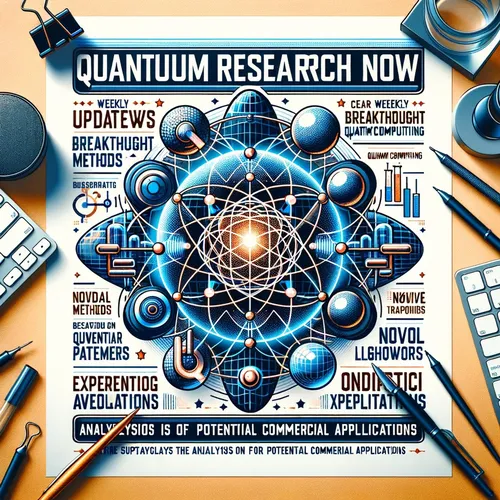IQM's 54-Qubit Leap: Scaling Quantum Lanes, Precision Gains
- Author
- Quiet. Please
- Published
- Mon 11 Aug 2025
- Episode Link
- https://www.spreaker.com/episode/iqm-s-54-qubit-leap-scaling-quantum-lanes-precision-gains--67331977
This is your Quantum Research Now podcast.
Breaking news drives today’s episode: IQM just unveiled Emerald, a new 54‑qubit processor on its Resonance cloud platform, nearly tripling qubits over its prior system while maintaining reliability[6]. What does that mean? Think of moving from a two‑lane country road to a six‑lane expressway—you can run the same journey, but now you can test how traffic scales when rush hour really hits, exposing the true bottlenecks and where you need better on‑ramps and exits[6].
I’m Leo—Learning Enhanced Operator—your resident quantum specialist. I’m standing in a lab under the steady sigh of cryogenics, the fridge humming like a distant cello, coaxing superconducting qubits into coherence. IQM’s news matters because 20 qubits let you prove an algorithm “works in principle,” but 54 lets you push toward the classical brute‑force limit and see if your methods still hold in the wild, including the real overhead of error mitigation[6]. In plain terms: it’s the difference between rehearsing a play in a classroom and staging it under lights, with audience, props, and the pressure that makes small errors snowball.
And Emerald is already being put to work. Finnish startup Algorithmiq reported a 100x boost in precision on molecular simulations for photodynamic cancer therapy design—exactly the kind of chemistry where tiny phase errors can derail results—using IQM Emerald[6]. If validated broadly, that’s like swapping a blurry microscope for a crisp objective lens: same specimen, but suddenly the proteins’ twists and charge dances snap into relief[6].
Zoom out, and you see a pattern this week: Japan just launched a fully homegrown superconducting quantum computer at Osaka University’s QIQB—hardware, cryogenics, and open‑source software stack built domestically—signaling national‑level integration muscle ahead of demonstrations at Expo 2025[3]. Meanwhile, ecosystem momentum is visible in distribution moves like IQM’s partnership with TOYO Corporation to place on‑prem systems across Japanese labs and enterprises—seeding hands‑on expertise where it will compound fastest[5]. Even the calendar beats matter: earnings calls from players like IonQ and QCi bracket the narrative, underscoring commercial cadence as technical milestones arrive[7][1].
Let’s get technical for a minute. Superconducting qubits live near absolute zero, where microwave pulses sculpt Bloch‑sphere arcs. With 54 qubits, crosstalk maps start to look like city grids at night—you don’t just see one skyline; you see where power lines hum and where noise leaks. That’s where error mitigation earns its keep, teaching us which routes to detour and which to pave, long before full error correction is affordable[6]. The everyday parallel? Urban planners don’t design for Sunday traffic; they design for the storm.
Thought leaders have been pointing to hybrid quantum‑classical workflows as the near‑term bridge: modest percentage gains today that stack into material advantage in optimization, chemistry, and ML as systems scale[8]. Emerald’s scale bump is a step toward that compounding future—more lanes, more honest stress tests, more truth about what survives contact with reality[6][8].
This is Quantum Research Now. I’m Leo, Learning Enhanced Operator. Thank you for listening, and if you have questions or topics you want on air, email me at [email protected]. Don’t forget to subscribe to Quantum Research Now. This has been a Quiet Please Production—find more at quiet please dot AI.
For more http://www.quietplease.ai
Get the best deals https://amzn.to/3ODvOta
